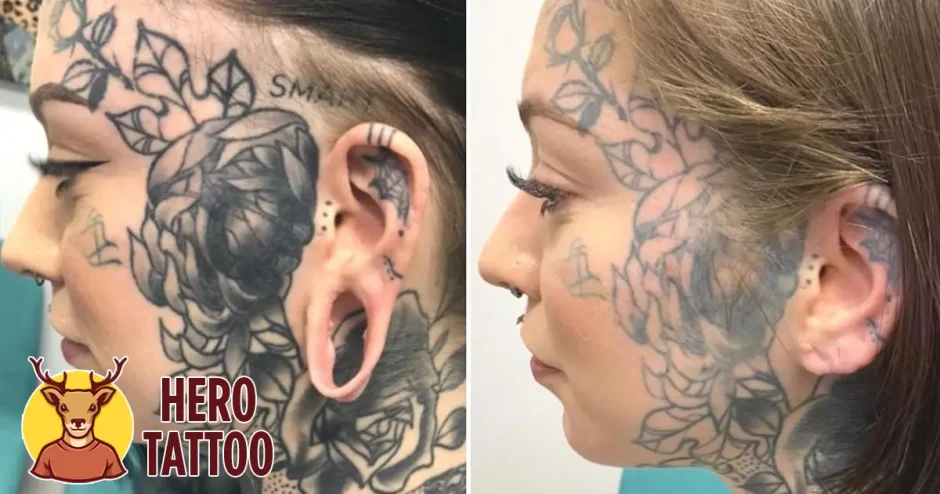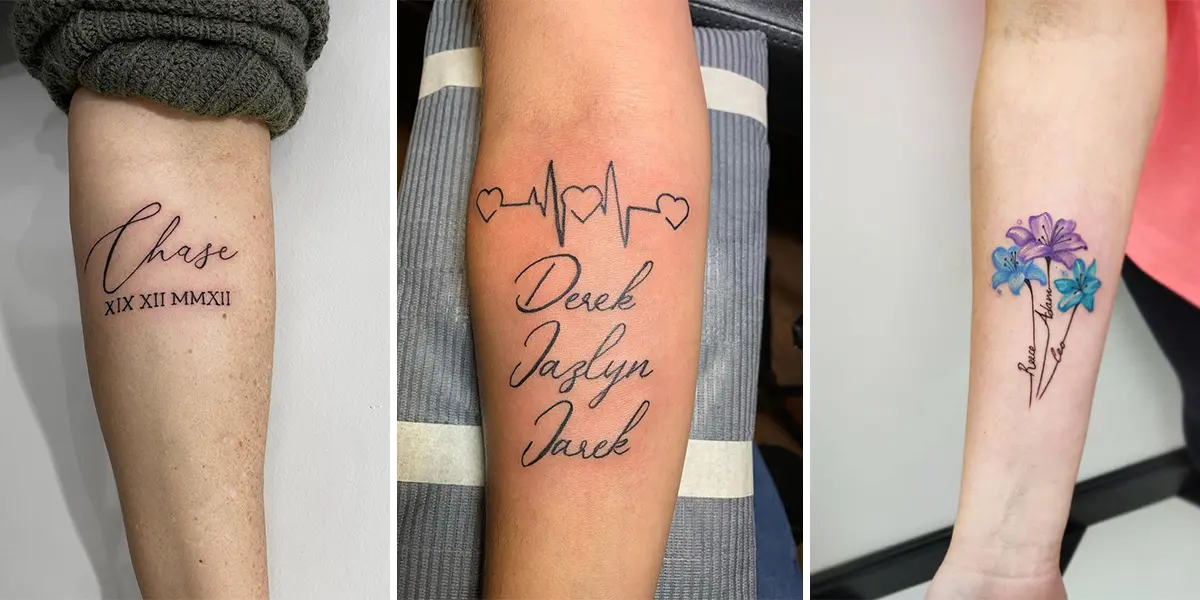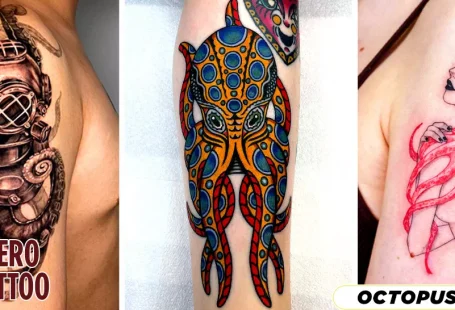Laser tattoo removal is the best choice if you don’t like your ink or need to get rid of it for other reasons. Laser removal is rated the most excellent removal option and the safest one, and we agree with that.
No other tattoo removal method is more successful and less intrusive than laser tattoo removal. However, there are several aspects people often overlook while talking about laser tattoo removal. One of the things that people are worried about is scarring that might happen while or after the removal is done.
So, is it something that may happen to you, and should you be worried? Moreover, what should you do if you’re left with a scar instead of ink-free skin? If these questions trouble you, you’re in the correct spot.
In the following paragraphs, we’ll look at laser tattoo removal side effects, such as scarring, how often they occur, and what you can do to prevent them.
Laser Tattoo Removal and Scarring?
How Does Laser Tattoo Removal Work?
To know more about scarring and other side effects, we first need to look at how laser tattoo removal works.
Laser tattoo removal is done utilizing Q-switched lasers, regarded as the best on the market for tattoo removal. They employ the photomechanical effect to target the ink on the skin, and the success rate of that targeting relies on the color of the ink. The best ink color for laser tattoo removal is black, whereas the worst are the brighter hues, like yellow.
The Q-switched lasers function in the following manner:
- Once put on the skin, the laser shoots a beam of infrared light into the skin, targeting the ink or the tattoo pigment.
- When the light hits the ink, the ink absorbs it; the more profound the tattoo ink, the better the absorption.
- Then, the laser starts emitting shock waves of energy that are designed to heat the ink.
- Once the ink reaches a specified temperature, it starts to evaporate into the surrounding skin.
And that is how laser tattoo removal works. However, it all sounds fantastic and delightful until you learn that the warmth lasts just a few seconds, and the tattoo takes repeated shock waves to get rid of the ink. That is why it might take between 10 and 30 laser removal treatments to get rid of a tattoo. And, as you can understand, the greater the number of sessions, the greater the danger of adverse effects and skin damage.
Does Laser Tattoo Removal Cause Skin Damage?
Skin harm from laser removal is rare but possible. However, to talk about skin damage, we need to keep the following aspects in mind:
- Hypersensitive skin is more prone to injury than normal skin. Hypersensitive skin is more likely to experience damage.
- Placement of the tattoo (if the tattoo is put where the skin is thin, sensitive, and has numerous nerve endings, the harm could be more obvious). (If the tattoo is placed where the skin is delicate, sensitive, and has many nerve endings, the damage might be more prominent.)
- The size of the tattoo (more extensive tattoos require more removal sessions, which causes skin damage) (larger tattoos require more removal sessions, which increases skin damage).
- Color of the tattoo (skin damage appears to be more probable if the tattoo is lighter) Skin damage tends to be more possible if the tattoo is more delicate.
However, even if you have all the basis for potential skin damage during laser removal, it is unlikely unless you’re not correctly following the aftercare procedure. Skin harm is also possible if you get your tattoo erased by someone unprofessional. It is always advisable to get your tattoo erased by qualified and experienced specialists at trustworthy and respected facilities.
What About Scarring?
Finally, we get to talk about the scarring issue. Much like skin damage of any type, scarring is also rare for laser tattoo removal, though possible in some circumstances. Let’s state that laser tattoo removal doesn’t usually end up with a scar; scarring is not an expected effect of this process, especially if it’s done correctly.
If the laser removal isn’t done appropriately, for example, if the skin is being heated for too long, then the harm to the skin can be pretty substantial. The warmth of the skin might burn it, which can result in a scar. The same can happen if the treatment is done using an older laser, which might burn the skin and cause scarring.
Moreover, you risk poor skin regeneration and healing if you don’t follow the proper aftercare regimen once laser removal is done. This can also result in skin pigmentation disorders and scars.
These instances are infrequent and may be easily avoided if you go to a trustworthy laser removal center. Experienced doctors do not make such blunders, and they are detailed in their explanation of how you should take care of your skin following the treatment.
Other Tattoo Removal Methods: Do They Cause Scarring?
Other removal procedures can cause severe skin damage and scarring, unlike laser tattoo removal. For example;
- Surgical tattoo removal – because this method involves the tattoo being taken out of the skin, it is reasonable to state that it results in a scar in most circumstances. The system consists of the tattoed skin being taken away and the remaining skin being sewn together.
- Dermabrasion tattoo removal is done using sanding equipment to remove the inked skin layer. This process can cause severe skin damage, irritation, inflammation, and scarring.
For various reasons, these procedures are advised for tattoo removal methods, one of which being skin damage and scarring. Not to mention that they’re not safe and do not restore the skin to its previous look. They’re also not cost-friendly and aren’t effective in most circumstances.
How To Prevent Scarring And Skin Damage With Laser Removal?
Although rare, scarring following laser tattoo removal might develop. Luckily, there are several ways you can prevent it. Here are the hows:
- Find a reputable clinic and trustworthy personnel. By choosing a reputed facility and high-quality professionals, you’ll limit any skin damage, let alone scarring. Experts will give the most excellent care and guarantee that laser removal proceeds smoothly and quickly.
- Do not touch the treated area. Following laser removal, the tattooed skin will start to heal, which will produce scabbing and blisters. If you want to avoid scarring, you should not touch the skin. Do not pick the scabs or blisters or scratch the skin. You’ll prolong the healing process and maybe even create discomfort and skin damage in the form of a scar.
- Wear sunscreen: when your skin has been exposed to heat and light, it should be in your best interest to protect it from future exposure to UV rays and heat. Wear sunscreen to minimize additional skin damage and potential scars. Sunscreen can also assist with hyperpigmentation concerns following laser removal.
- Stay healthy: If you want your skin to recover correctly and manage skin injury without scarring, make sure to maintain your body’s health. Stay hydrated, avoid alcohol and smoking, and exercise. All of this will affect and improve your immune system, which in turn will send more white blood cells to the area where you had the ink removed. These white blood cells will clear the remaining ink and help repair the skin tissue.
Again, we have to highlight how crucial it is to conduct your homework and select the finest laser removal facility for your tattoo removal. It would assist in avoiding dodgy and untrustworthy establishments where the personnel aren’t professional or when you observe even one warning flag. Trusted and skilled specialists are the only options for your laser tattoo removal to go well.
Are There Any General Risks to Laser Tattoo Removal?
Apart from the uncommon but probable scarring, laser tattoo removal is regarded as one of the safest treatments. But, of course, this one too contains some hazards, just like every surgery. These include;
- The laser removal may not work for a lighter ink color or the enormous size of the tattoo. Laser tattoo removal may not work in all circumstances. Sometimes the tattoo is too awkwardly positioned, too vivid in color, or too enormous for the laser to handle.
- Your health condition could get in the way or be activated. Occasionally, laser removal might start a health reaction or flare-up a current issue if you suffer from a health condition. For example, it can induce eczema and herpes or decrease the overall immune system.
- There might be some aftercare hazards: without adequate aftercare, laser tattoo removal can lead to skin damage, blistering, and scarring. You can also be limited to the clothes you can wear so you don’t cause extra injury or irritation to the skin.
Are There Other Side Effects of Laser Tattoo Removal?
Some of the common adverse effects and things you should keep in mind in regards to laser tattoo removal may be:
- Potential pain and discomfort during the process or after the procedure.
- Likely scabbing, blistering, and itching once the procedure is done.
- You may have to spend extra time on each session as not all laser removal treatments are rapid.
- There is always a possibility that not all of the ink can be removed.
- It may be necessary to visit your dermatologist to verify whether your skin can tolerate laser tattoo removal.
Final Thoughts
Unwanted side effects, including skin damage and scarring, are infrequent and unusual with laser tattoo removal. Unless your skin is vulnerable or you suffer from a health or skin issue, you shouldn’t be afraid of undertaking a laser removal operation.
Your tattoo will be effectively gone as long as you select a trustworthy facility and follow the aftercare protocol. Just do your study on this issue, talk to your dermatologist about your skin and tattoo condition, and find a facility where laser removal is done under professional medical supervision.
Sharing is caring!






